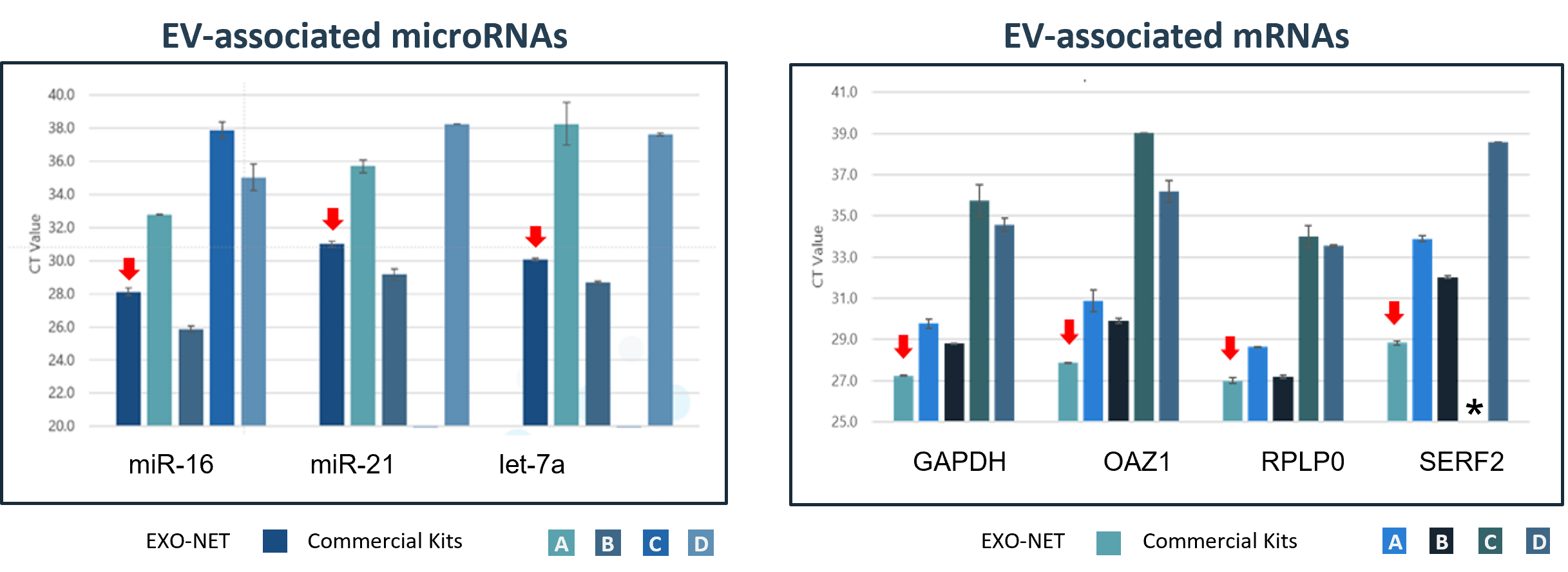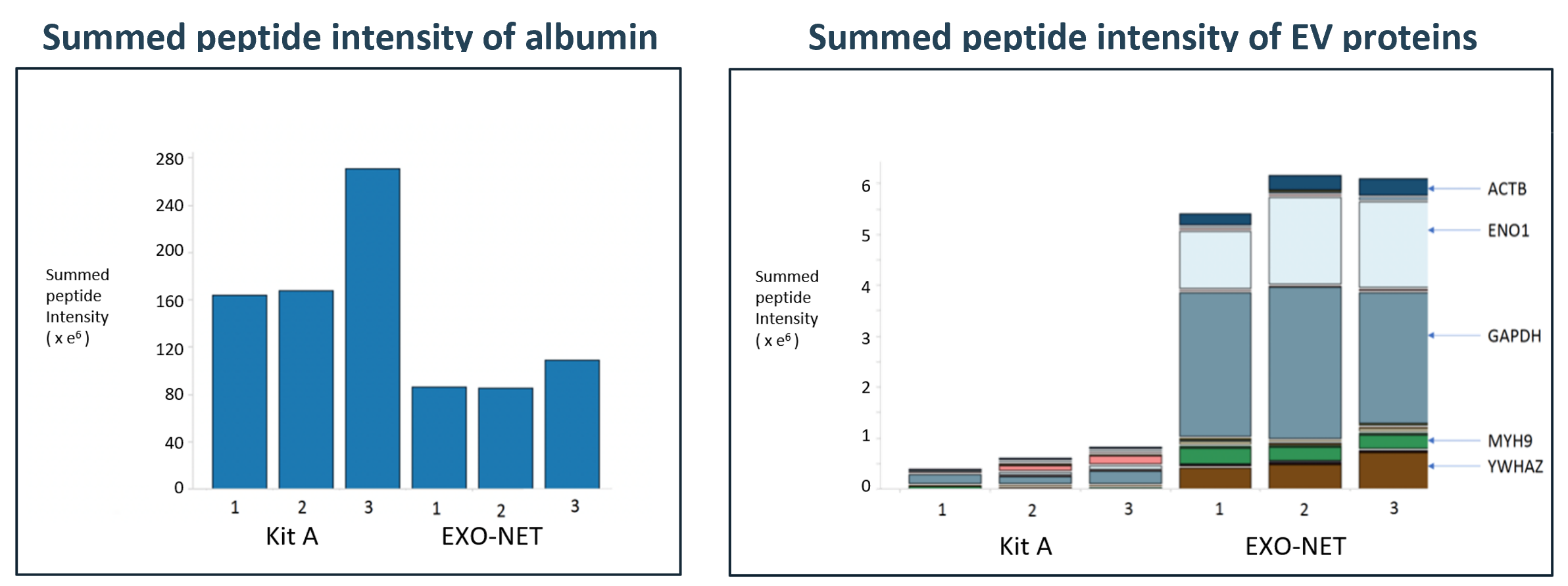Data & Figures
EXO-NET Data & Figures
EV isolation comparison | RNA

Objective: To compare mRNA and microRNA yield and recovery from EXO-NET isolated EVs with 4 other EV isolation kits.
Method: EVs were isolated from pooled normal human plasma by EXO-NET and other 4 commercial kits according to their manufacturers’ instructions. Isolated EVs were lysed and total RNA were extracted for qPCR analysis to measure both microRNAs (miR-16, let-7a and miR-21) and mRNAs (GAPDH, OAZ1, RPLPO and SERF2).
Result: EXO-NET delivers equivalent or higher recovery of plasma EV RNA (mRNAs and microRNAs) compared to other 4 commercial EV isolation kits as indicated by a lower CT value. *RNA level was below the limit of detection.
EV isolation comparison | Protein

Objective: To compare mass spectrometry proteomic analysis of EXO-NET isolated EVs with another bead-based EV isolation kit.
Method: EVs were isolated from pooled normal human plasma by EXO-NET and Kit A according to manufacturers’ instructions. Isolated EVs were lysed and extracted total protein were processed for proteomic analysis by tandem mass spectrometry.
Result: Mass spectrometry analysis showed that albumin peptide intensity in Kit A was 2-fold higher than that observed for EXO-NET isolated EVs. EXO-NET reduces contamination of EV preparations by serum proteins that may confound downstream analysis. The EV peptides intensity in Kit A was 6 to 10-fold less than that observed for EXO-NET-isolated EVs.

